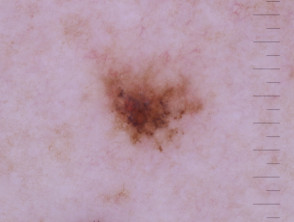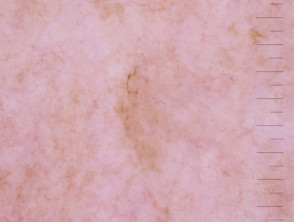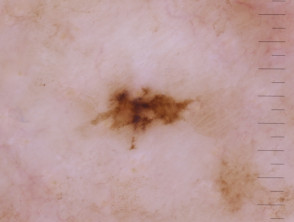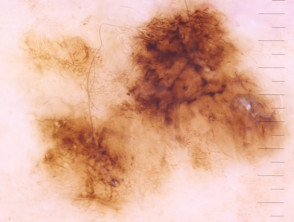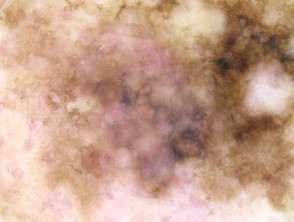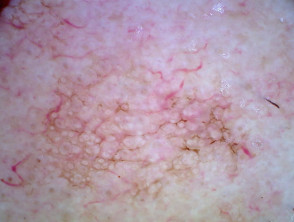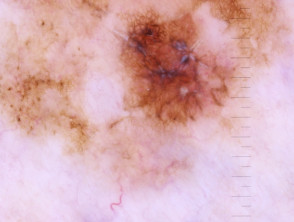What are angulated lines?
In dermoscopy, angulated lines are straight lines that meet at angles larger than 90 degrees but do not intersect. They may form complete or partial polygonal shapes. They are also known as polygons, rhomboids and zigzag pattern. They are a dermoscopic clue to melanoma.
What do angulated lines look like through the dermatoscope?
Angulated lines are grey-brown lines that are connected at an angle, or coalescing to form polygons.
Angulated lines
In which lesions are angulated lines seen through the dermatoscope?
Angulated lines are seen in the following skin lesions:
On the face, angulated lines correspond to rhomboids and are also represented in:
Dermoscopic angulated lines
What is the histological explanation of angulated lines?
The precise histology is not clear but likely correlates with an accumulation of inflammatory cells and melanophages in the dermis, underneath the malignant melanocytes residing in the epidermis.
Angulated lines seem to correspond to a flattened dermoepidermal junction (DEJ) with fewer and blunter rete pegs due to a proliferation of atypical melanocytes at the DEJ, as well as a focal accumulation of melanophages in the superficial dermis [1].
